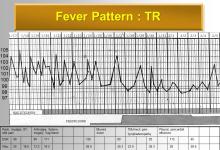Lupus in an empty house Save

The full house immunofluorescence pattern is the classic histopathologic finding of lupus and lupus nephritis. Glomerular deposits staining for IgG, IgA, IgM, C3 and C1q can help confirm a suspected diagnosis of systemic lupus erythematosus (SLE). This full house pattern is not specific for lupus, as it is also seen in endocarditis, HIV, hepatitis C, syphilis, portosystemic shunt, and post-streptococcal glomerulonephritis (1-3).
But what about patients with negative immunofluorescence and no proliferative or membranous features?
A 24-year-old female without any significant past medical history presented to our hospital for dyspnea and bilateral lower extremity edema. She had anasarca on physical examination. Her presenting creatinine was 2.1 (reference <1) and her urine protein was recorded at >1000, making her protein/Cr ratio (UPCR) uncalculatable. Her microalbumin/Cr ratio (UACR) was 5,647 mg/g (ref 0-29 mg/g). Imaging showed trace bilateral pleural effusions, pericardial effusions and concern for acute interstitial pancreatitis. Her labs were notable for ANA >1:2580, speckled with positive SSA 84 (ref <10), Smith 6.3 (ref <1), and RNP >8 (ref <1). Surely, this is lupus nephritis - right?
Renal biopsy showed focal segmental glomerulosclerosis (FSGS) with tip lesion. There was no evidence of proliferative or membranous changes and immunofluorescence was negative. She was started on prednisone 1 mg/kg for FSGS during her hospitalization with excellent clinical response. By her first hospital follow-up two weeks later, her Cr improved to 0.61 and her urine protein/Cr ratio improved to 825 (ref <200 mg/g) and UACR 405. Her disease had responded extremely well to the corticosteroids and her anasarca dramatically improved.
Given her serologic profile, she was concluded to have likely lupus podocytopathy as her etiology. Her clinical features included the renal disease and serositis, though it is unclear if this was secondary to the anasarca. Lupus podocytopathy is a rare presentation of lupus nephritis accounting for about 1% of lupus podocytopathy (4). In 88% of patients, nephrotic syndrome is the presenting symptom of SLE (4). These patients can also have other typical extra-renal features including malar rash, arthritis, cytopenia, alopecia, serositis, fever, Raynaud's phenomenon, sicca, and mouth ulcers. Lupus podocytopathy may be divided as minimal change disease (MCD) or FSGS. Those with FSGS, like the above patient, have worse outcomes, higher risk for hypertension and acute kidney injury on presentation, more severe involvement on biopsy, less likely to respond to therapy, and at greater risk for relapse (4,5).
Corticosteroids are first-line treatment in lupus podocytopathy and are generally highly effective, with 94% remission with median remission in 4 weeks (4). That said, however, more than one-half of patients have relapses of renal disease (4), particularly with the FSGS phenotype. A review by Oliva-Damaso et al suggested 1 mg/kg prednisone for a minimum of 4 weeks, with tapering over 6 months after achieving remission (5). The authors suggest that in cases of FSGS lupus podocytopathy, immunosuppressive therapy be given in addition to immunosuppressive therapy first-line due to the more severe phenotype.
In our presented case, she has felt well symptomatically with improvement of anasarca without recurrence of serositis or other extra-renal symptoms. She deviated from the prescribed steroid regimen and self-tapered to 5 mg at 4 months. She has been treated with hydroxychloroquine 300 mg (5 mg/kg), but firmly refused our recommendation for immunosuppressive therapy. Despite this minimal therapy, she continues to have a complete renal remission at 4 months with normal Cr 0.66, UPCR 93, and UACR 26.
While I advised her risk of relapse remains very high, the patient has been reluctant to adhere to corticosteroids or immunosuppressive medications. Clinical practice often does deviate from our preferential approach, and will keep very close tabs on her given her risk of relapse.
References:
- PMID: 32893813 - Infection-related glomerulonephritis mimicking lupus nephritis. Clin Nephrol. 2020 Oct;94(4):212-214
- PMID: 37723888 - Syphilis as the great mimicker: A case of full-house pattern membranous nephropathy. Nephrology. 2024 Jan;29(1):18-20.
- PMID: 18046678 - "Full house" proliferative glomerulonephritis: an unreported presentation of subacute infective endocarditis. J Nephrol. 2007 Nov-Dec;20(6):745-9
- PMID: 26983707 - Clinical-Morphological Features and Outcomes of Lupus Podocytopathy. Clin J Am Soc Nephrol. 2016 Apr 7;11(4):585-92.
- PMID: 31733721 - Lupus Podocytopathy: An Overview. Adv Chronic Kidney Dis. 2019 Sep;26(5):369-375.










If you are a health practitioner, you may Login/Register to comment.
Due to the nature of these comment forums, only health practitioners are allowed to comment at this time.